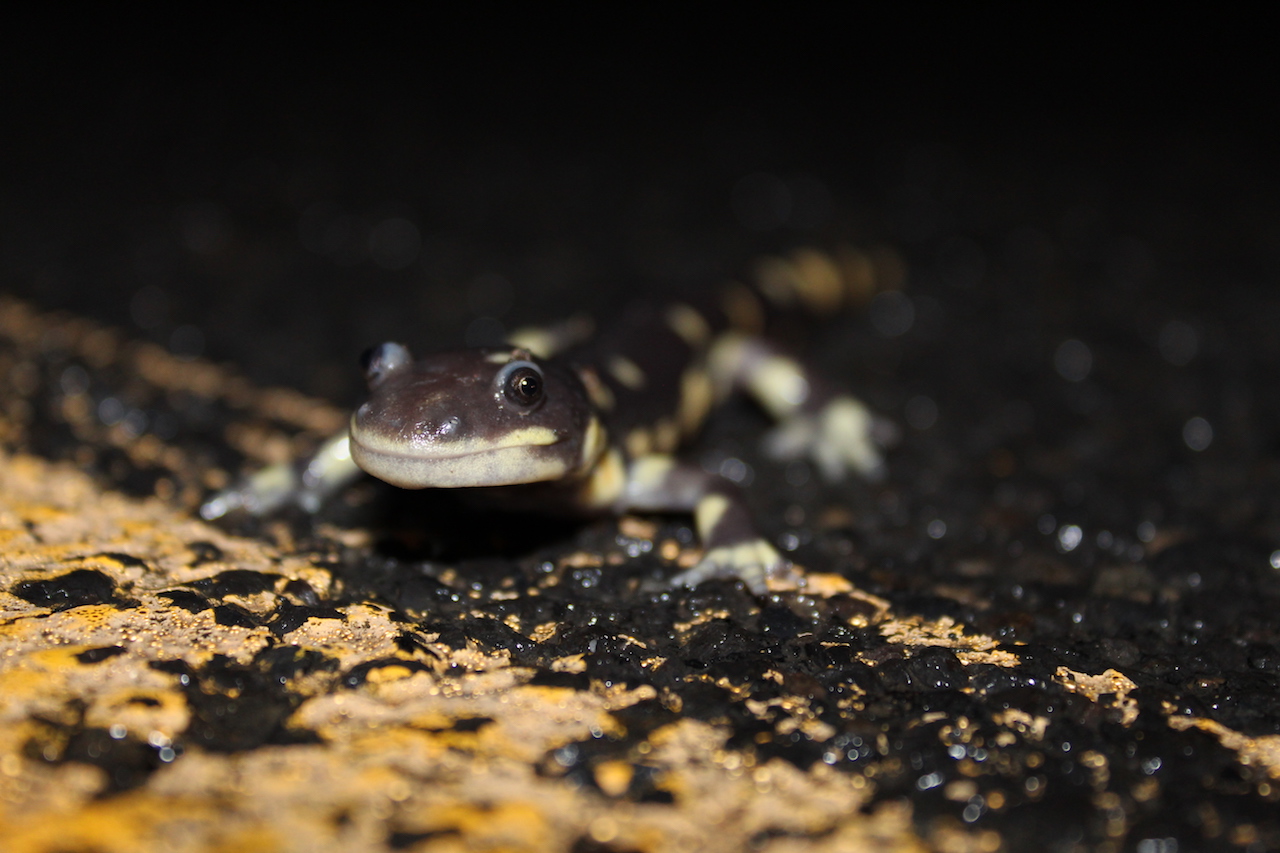Happy Newt Year
Not quite the new year but the 29th of december is certainly close enough.
The calendars were marked and the day finally arrived. About three weeks ago, my mother had found a newspaper clipping announcing a Newt search in Tilden park. For three weeks we had been waiting for this and it did not dissapoint.
The ranger leading it was enthusiastic and knowledgeable regarding salamanders. He led us through the back of a golf course leading to a stream and then up a nearby closed road that was heading up a hill. Seemed like perfect salamander migration territory.
To my excitement, it began to drizzle as soon as the event began and the light rain held up the entire night. From the moment we started newts were crawling everywhere; in the grass golf course, in the stream, and on the road. As a group (and we were quite a large one), we saw upwards of 30-40 california newts in an hour and a half. Our ranger was bummed with the lack of diversity but california newts were my target for the day so I was satisfied.
I didn’t want to draw too much attention to myself so I didn’t photograph a lot, but I still took some.
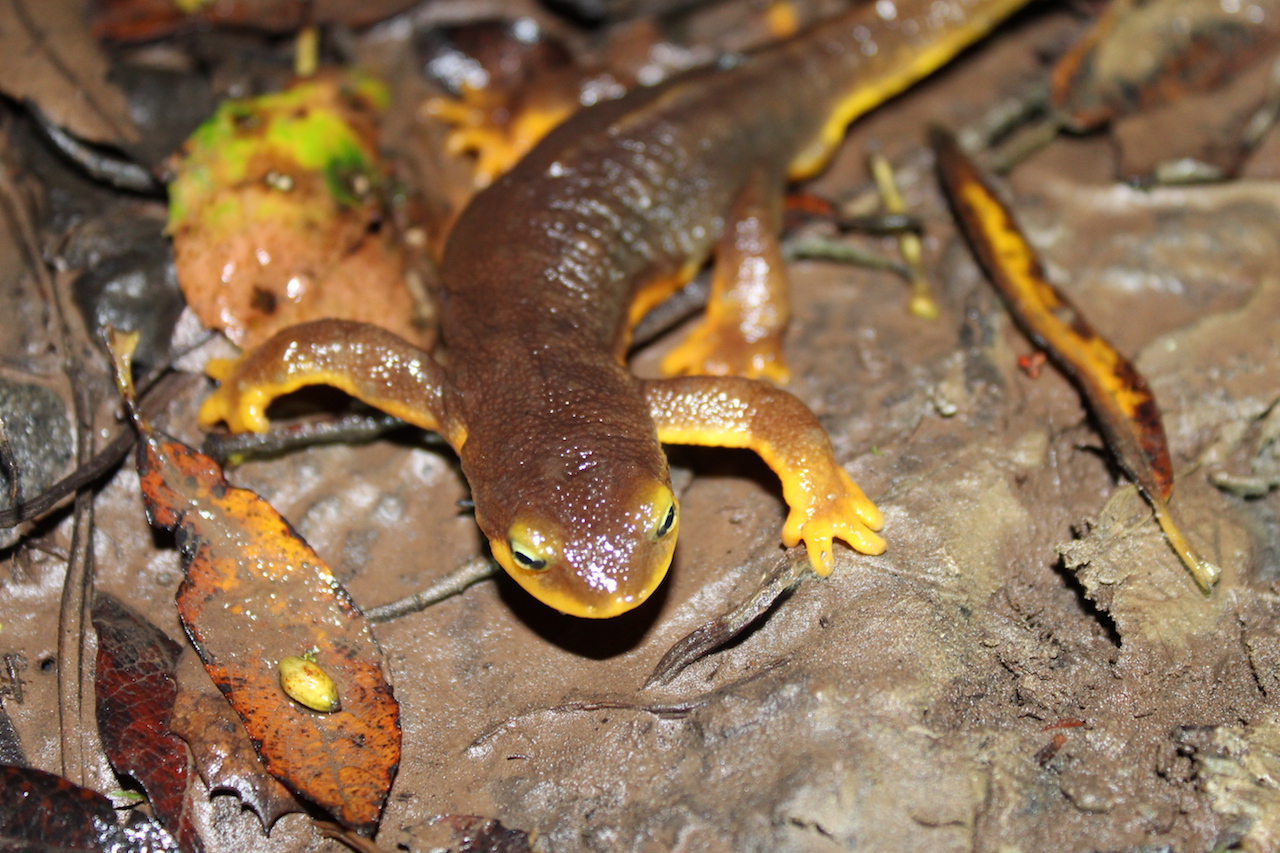
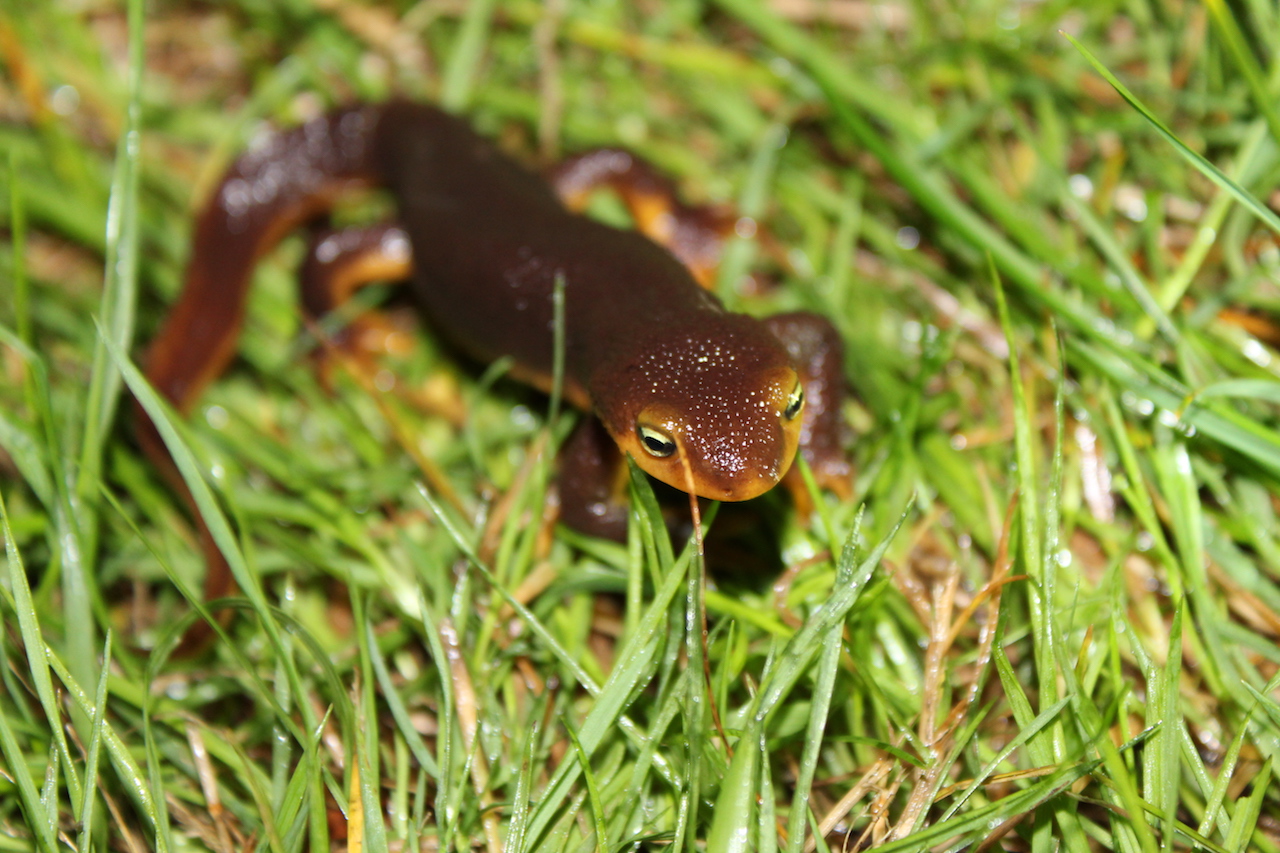
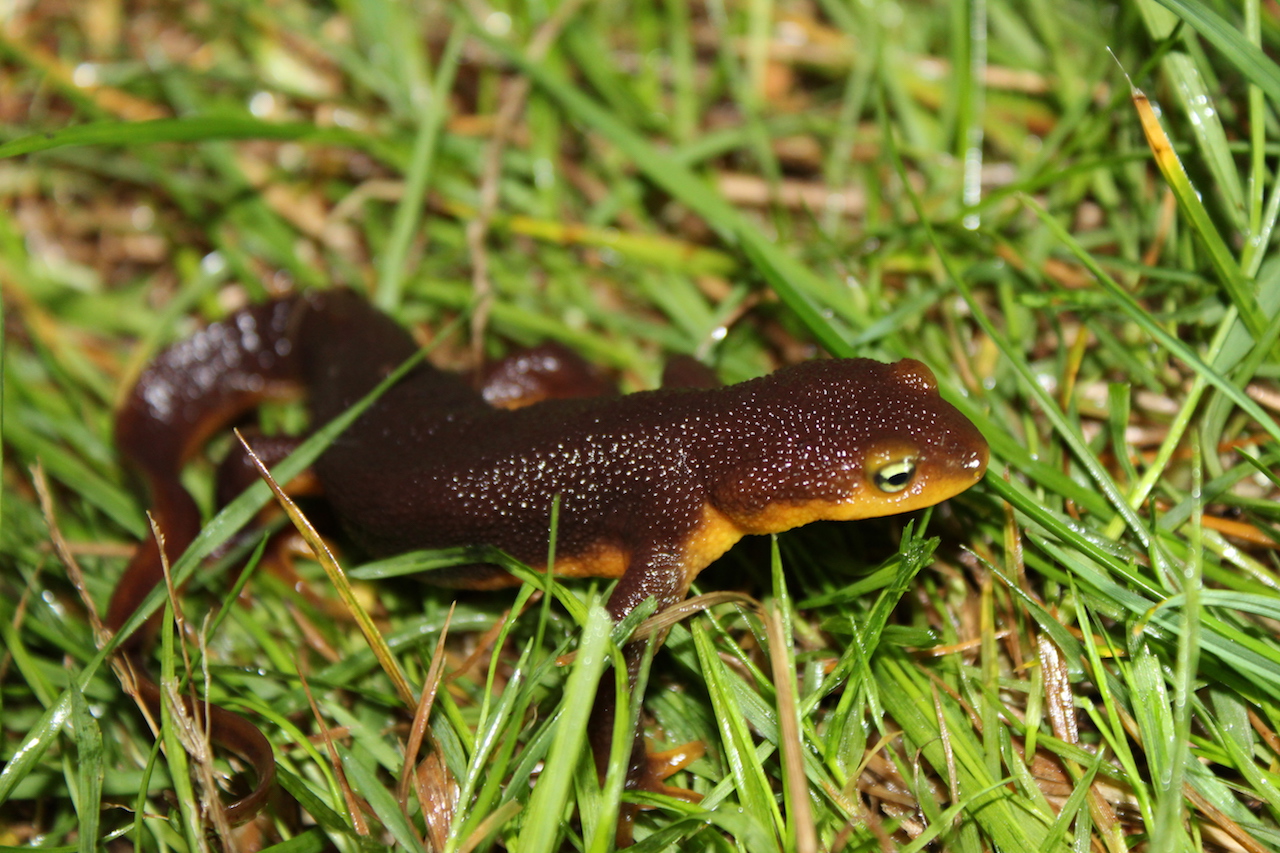
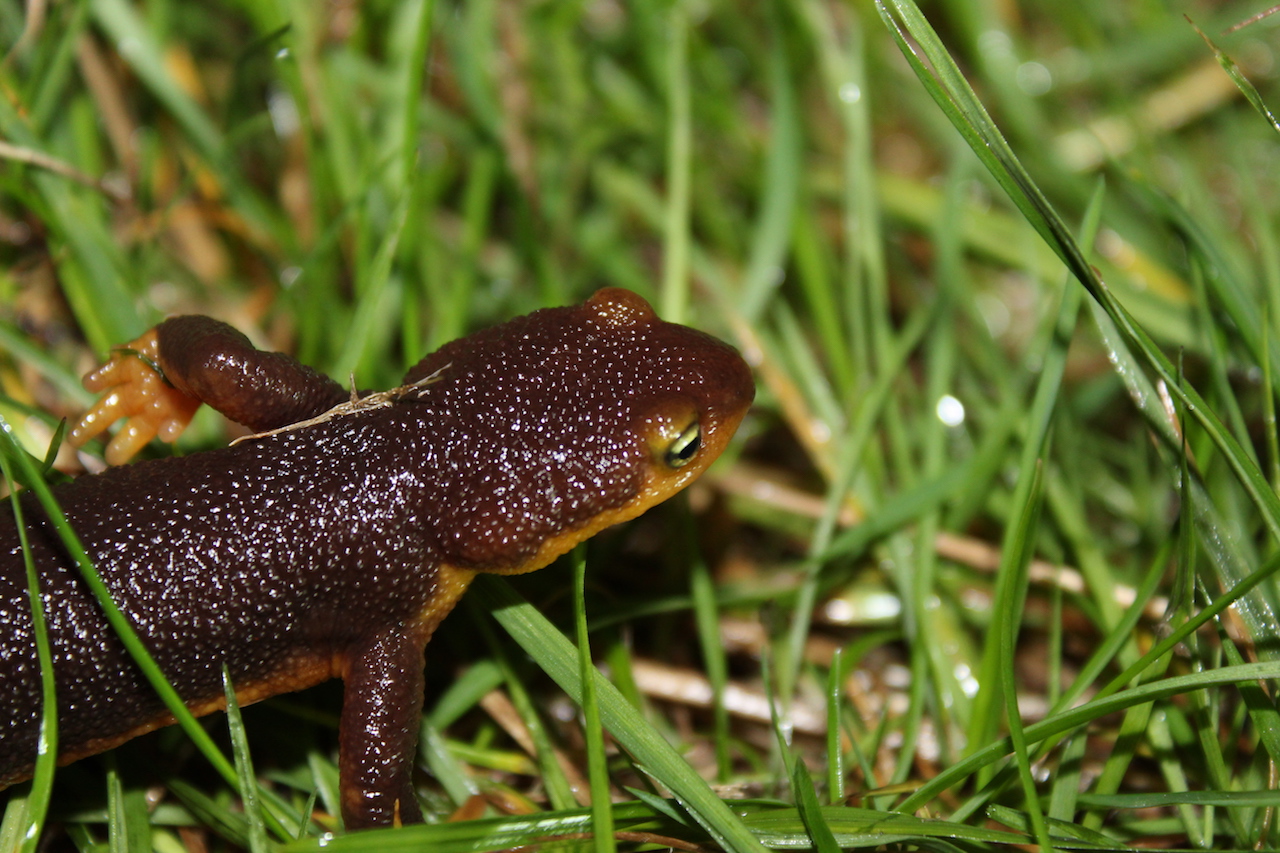
After seeing a california newt in the wild; their bumpy skin, paddle-like tail, and the lack of a constriction at the base of the tail are more obvious and I hope not to be tricked next time I find an ensatina. That being said, the Batesian Mimicry works well. Ensatinas intentionally are colored similar to california newts hoping that predators mistake them for it. The newts high levels of toxicity has conditioned many animals to associate its bright orange underbelly (which they expose when threatened) with danger and avoid eating such animals. Ensatinas are taking advantage of that conditioning without being toxic. And they sure fooled me.
Hearing the ranger speak about how perfect the conditions were, I decided to revisit the area I found the california tiger salamander in the summer. Surprise, surprise there it was.
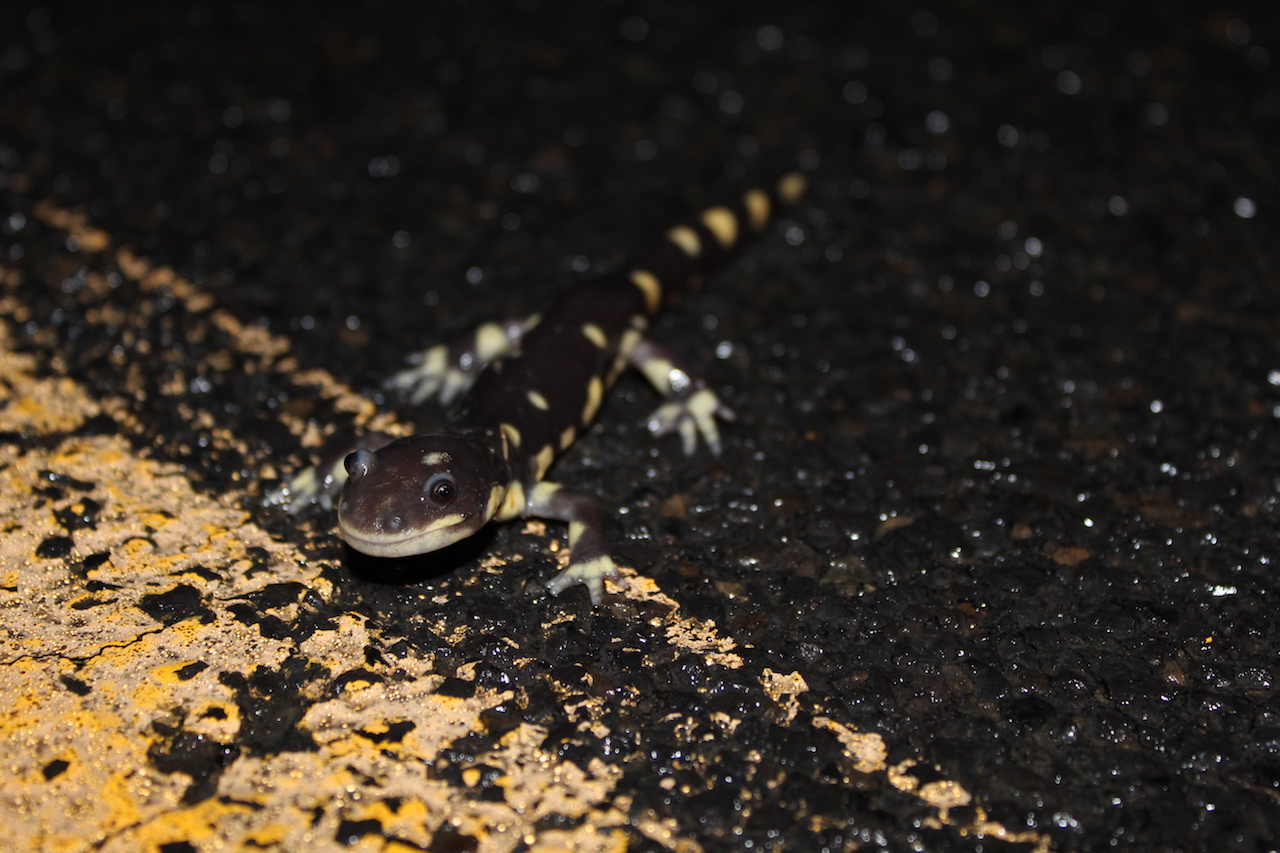
But hold on, this doesn’t look like the one I found over summer (below). This one is clearly a tiger salamander but the other one had a slightly different body structure and didn’t have the yellow spots.
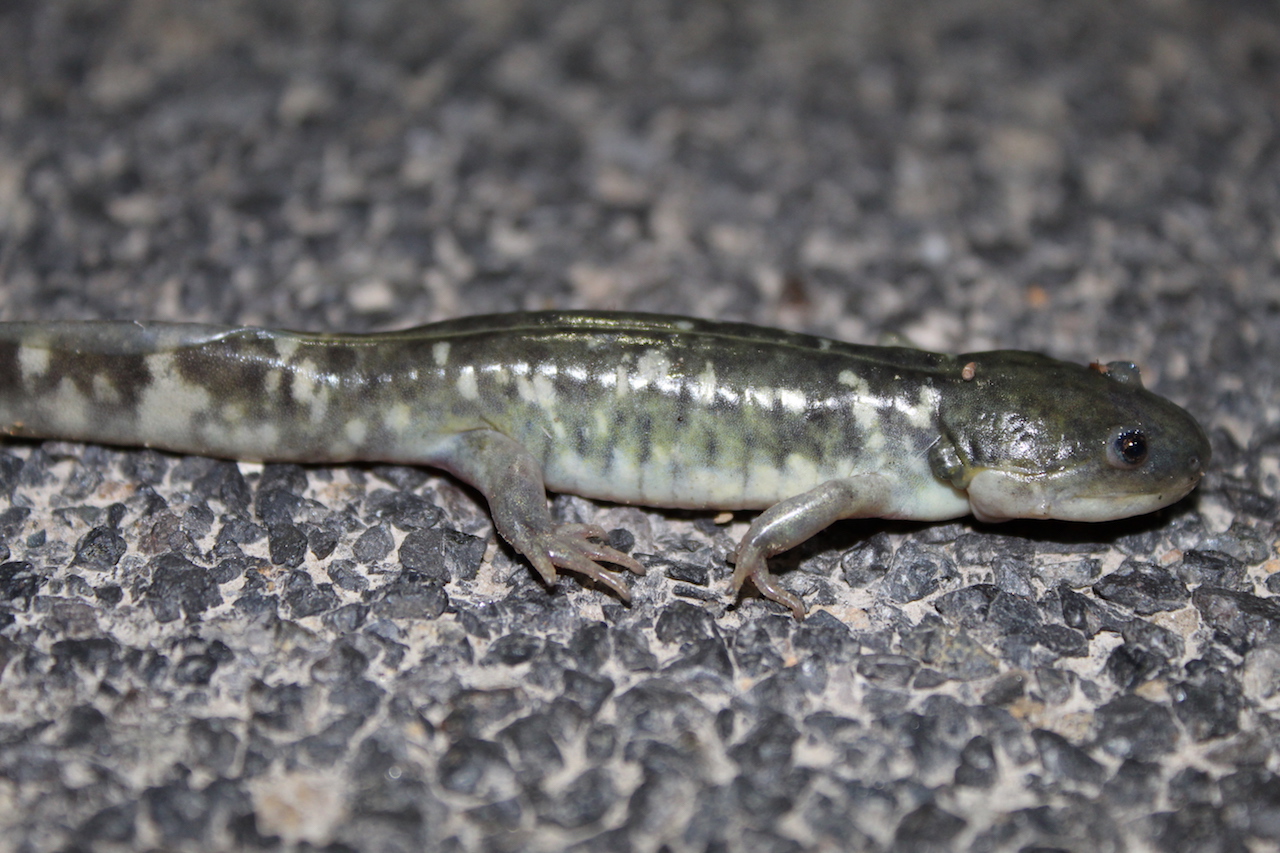
With a little research, I realized the one I found over summer is still a tiger salamander but must have been a larvae having underwent metamorphosis. That day the conditions must have been just right (high moisture or evaporating pond) as we saw two salamanders making the transition from being aquatic to terrestrial. We see remnants of its paddle-like tail and its neck being almost nonexistent as it loses the remainder of its gills. Fascinating.
That concludes my 2019 herping adventures. It has been a very fun and successful year as I have started to spend more of my free time learning about and finding herps. I hope to find many more in 2020.
I leave you with a happy salamander.
